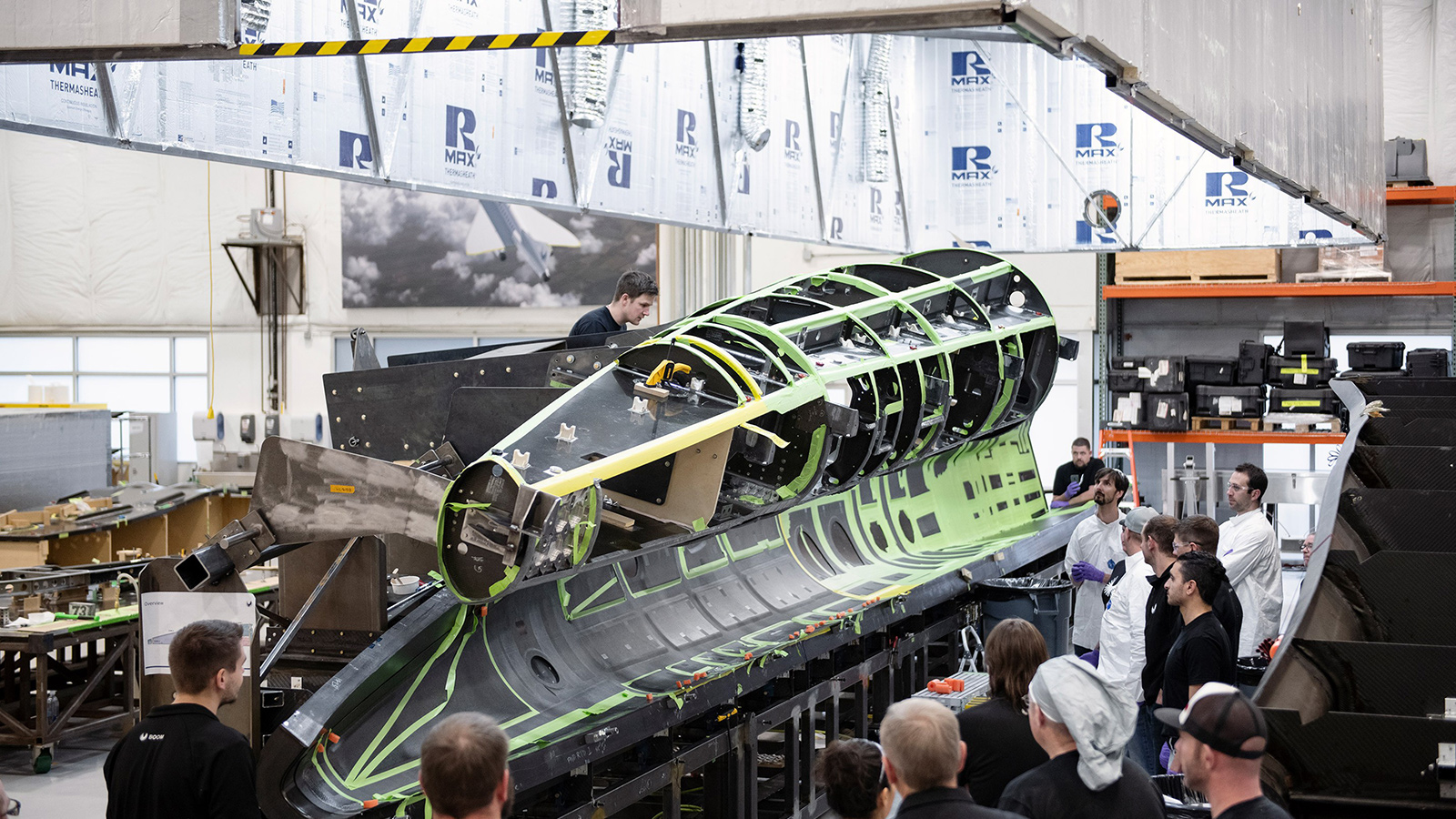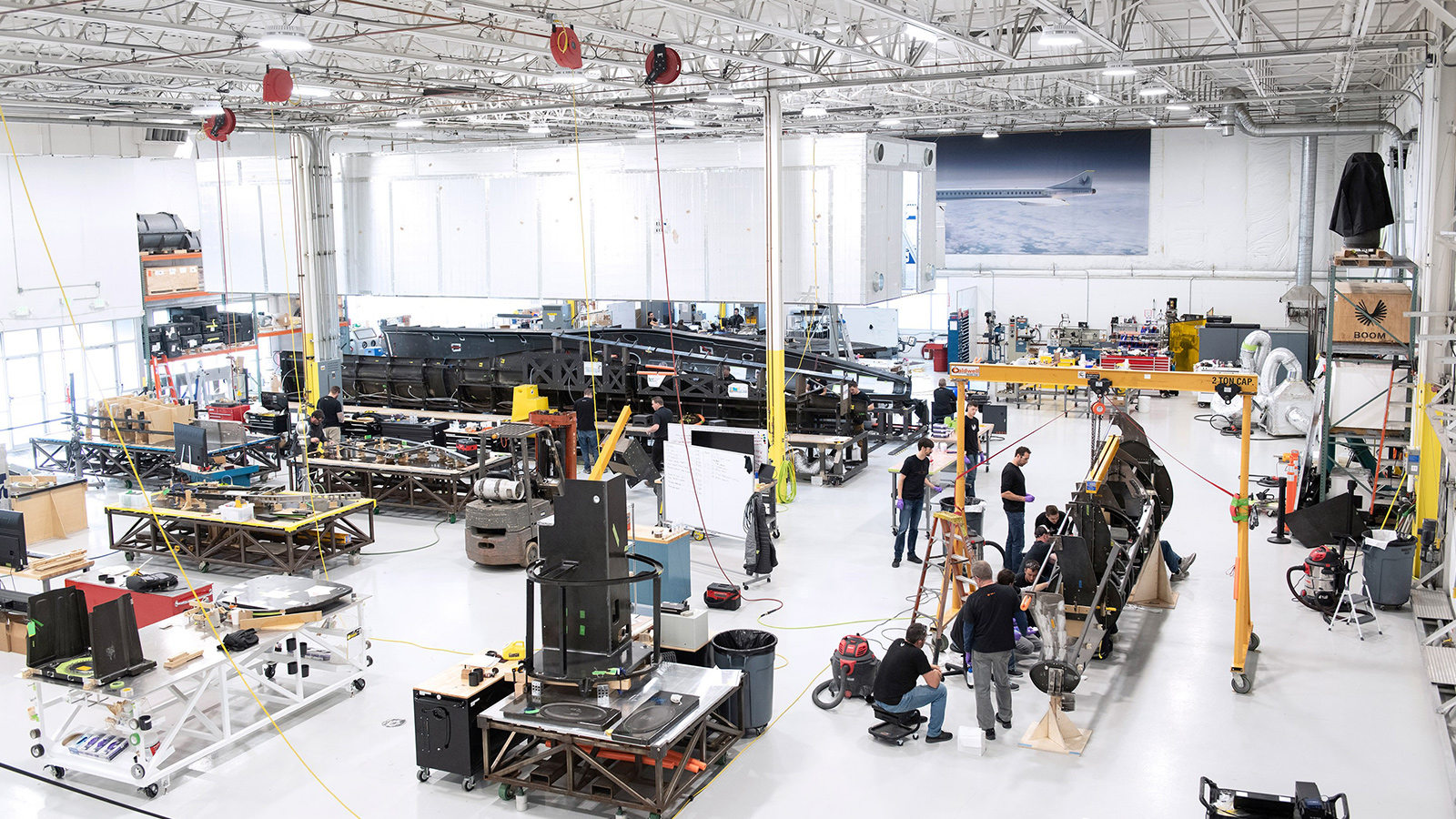Dueling strategies
By Keith Button and Cat Hofacker|March 2020
The companies leading the resurgent interest in supersonic travel have unique visions for how to normalize flight at speeds over Mach 1. Keith Button and Cat Hofacker tell the story.
The clashing business strategies of Aerion and Boom Supersonic are visible in the marketing pitches for their proposed supersonic passenger jets.
Aerion, based in Nevada and partly owned by Boeing, promises on its website to break down the “barrier to family, love, adventure, and time well spent.” Meanwhile, in Colorado, rival Boom asks business travelers to “imagine crossing the Atlantic, conducting business, and being home in time to tuck your kids into bed.”
In short, for Aerion, the path toward commercially viable supersonic travel runs through the super wealthy, who today buy business jets for fun as much as business. Boom, by contrast, wants to start by introducing a supersonic design that airlines will buy for business-class customers.
The question is whose strategy has the best odds of making supersonic travel a reality — not just for business travelers or billionaires, but someday for all of us. If their manufacturing schedules are to be believed, by the mid-2020s, the first evidence will begin to roll in.
One point of consensus among the competitors is that the revolution will require persistence and patience by those who fund the endeavors and those who will regulate the aircraft for safety, noise and emissions.
Boeing’s Eric Kaduce, director of the Boeing-Aerion venture, drew a parallel between this era and the 1950s. “When the 707 and the DC-8 came out, the range was shorter than a Super Constellation,” he said at January’s AIAA SciTech Forum, referring to Lockheed’s famous propeller-driven airliner. The first jets were noisier and burned more fuel. “We could have regulated [jet flight] out of existence,” he said. Instead, the 707 and DC-8 set the industry on a path toward modern airliners that are 70% quieter and that burn 70% to 80% less fuel. “I think it’s time for us to do it again with supersonics,” he said.
For Aerion, the starting point will be its 12- to 13-person, Mach 1.4 business jet, the AS2. Aerion plans to fly the first one in 2024 and deliver the first aircraft to customers in 2026.
Creating a supersonic business jet will be “a little bit of a lower-risk way of starting to build those regulatory pathways, those environmental pathways, and prove out the technology,” Kaduce told the SciTech audience.
As for Boom’s schedule, the company is not saying when it plans to fly its one-third-scale demonstrator, the XB-1, but the company has targeted the mid-2020s for introduction of Overture, a supersonic jet that would carry 55 to 75 passengers, depending on how an airline chooses to configure it. These aircraft would have a range of 8,300 kilometers and cruise at Mach 2.2.
“Eventually, assuming this becomes mainstream, what you’ll see is there’ll be a family of airplanes with different ranges. And you’ll use the right airplane for the right route,” says Joe Wilding, Boom’s chief technology officer.
Like Aerion, Boom executives think supersonic travel could one day become the norm. “We believe that, long-term, flying supersonic around the planet is going to be the only way to travel.”
Environmental challenges
Over the last year or so, Aerion and Boom have embraced the need to address the sizable carbon footprints of their proposed supersonic aircraft.
At SciTech, Kaduce said Boeing will “work with the regulators and start working with the environmental community,” so that “50 years from now, what we’re talking about is: How do we go from Mach 5 to Mach 8, not how we go from 0.85 to 0.92.”
Wilding of Boom says, “we’re massive fans” of “synthetic fuels made from more carbon-neutral sources.”
While climate change has seized center stage, it was the threat of noise pollution in the form of sonic booms that drove the businesses strategies that are playing out today.
The noise issue prompted Boom to focus on business-class airline travelers who often need to fly intercontinental across oceans. Once out over the sea, an Overture aircraft can accelerate past Mach 1.0 without running afoul of prohibitions around the world against supersonic overland flight, especially the decades-old FAA ban that helped doom the Concorde fleet.
During its formative years, Boom knew that NASA was making plans to clear a regulatory path for a new generation of supersonic passenger jets through what’s now called the X-59 Low Boom Flight Demonstrator. Under construction by Lockheed Martin Skunk Works in California, the X-59 will be flown in U.S. airspace starting in 2023 to gather community responses to variations of its sonic thump. The FAA and regulators outside the U.S. would then decide just how quiet supersonic passenger jets need to be when flying supersonically over land. In the U.S., this survey data could end the prohibition that’s been in place since 1973.
For Boom, the problem was the time all this would take. “We, as a company, decided we couldn’t let our future and our schedule rest on something like that when it’s completely out of our hands,” says Wilding. “There’ll probably be five, if not more, years of discussion around that before any kind of a general consensus comes out on how quiet is quiet enough.”
Boom’s schedule challenges have been great enough without waiting for the X-59 results. Engineers initially thought they could propel the XB-1 with a particular version of the General Electric J85 engine, but the desired version turned out to be unavailable. “We had to back up to a different variant with a little bit less thrust. We were able to work around that, but it very much was a delay to the program,” Wilding says.
Exploiting the Mach cutoff
Aerion also is not waiting for the X-59 results, but it has gone in an entirely different direction on the noise question. Part of its business case will involve flying over land at a top speed of Mach 0.95, but the company also wants to convince the FAA and international regulators that an AS2 can fly faster than Mach 1 without creating a sonic boom that can be heard on the ground. How? By taking advantage of a phenomenon called the Mach cutoff.
Aerion’s Gene Holloway, the company’s chief sustainability officer, explains the strategy like this: The cutoff point refers to the fact that, under the right combination of wind, altitude and speed, no sonic boom would be heard on the ground. By the numbers, the speed of sound — or Mach 1 — decreases as altitude increases, up until about 37,000 feet. If a plane is flying at 30,000 feet at 1,091 kph, which is Mach 1 at that altitude, then it won’t create a sonic boom at sea level because the plane is not exceeding 1,225 kph — the speed of sound at sea level.
With the Mach cutoff concept, an airplane could fly at 30,000 feet at Mach 1.1, or 1,201 kph, and still not generate a sonic boom on the ground, assuming the ground is at sea level. By monitoring the temperature, tailwinds and headwinds, and the altitude of ground level along its flight path, an AS2 could fly at just above Mach 1 without creating sonic booms along the ground, Holloway says. It would sound like a subsonic commercial plane flying overhead.
“You’re not going to have this major disruptive sound like a Concorde or a military jet; nothing like a space shuttle and certainly not like a SpaceX booster coming back,” he explains.
Pilots flying over land under the Mach cutoff concept would want to avoid cruising at Mach 1 exactly, where drag is maximized, and aerodynamics are unsteady. The further away from Mach 1, faster or slower, the lower the drag. Over the ocean, AS2 will cruise at Mach 1.4, Holloway says.
Competing with today’s air travel
Business travelers and the super-rich will be the first beneficiaries of their aircraft, but the supersonic pioneers see themselves as laying the foundation to someday bring supersonic flight to all of us.
Wilding predicts that supersonic aircraft will rival conventional aircraft on cost of travel and environmental sustainability.
“We think that’s several generations of airplane and engine away, but we do think that’s feasible within our lifetime,” he told an audience at SciTech. As for the competing strategies of Aerion and Boom, Wilding says there’s another way to look at it.
“We’re all helping each other indirectly or directly. We’re pushing the idea forward. We’re pushing the mainstream acceptance of this forward. We’re training people. We’re helping to influence organizations like AIAA to give more space for these discussions,” he says. “We’re big fans of everybody working in this space.”
Related Topics
Supersonic AircraftThe third competitor
Spike Aerospace of Boston, the supersonic-jet company founded in 2013 by physicist-entrepreneur Vik Kachoria, last year adopted a “quiet strategy,” which is one reason the company has shared little information of late, Kachoria tells me. Kachoria says he also had to step back from some of his duties last September through November to focus on an undisclosed health issue.
Spike still plans to fly a two-thirds-scale supersonic jet in 2021 to demonstrate low-boom flight. Kachoria concedes the 2025 target date for flying a full-scale version will likely slip.
— Keith Button










